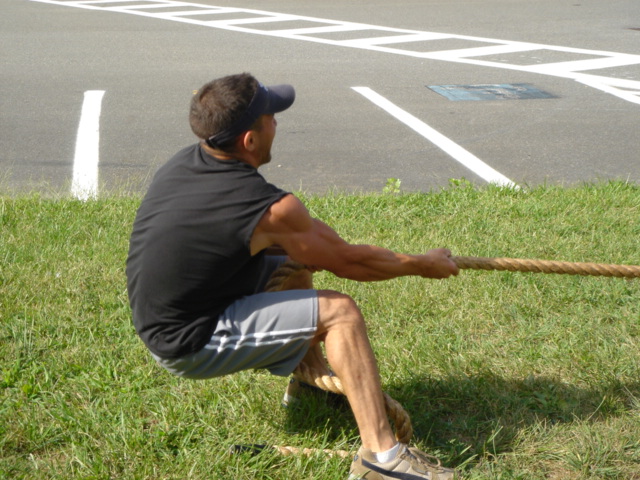
This is part two of a two-part series.
In my first article on body weight training titled “30 Days Without Weights,” I spoke about the many benefits of using body weight training during a training phase. After the article was published, I started to get questions from many athletes regarding this type of training. Most of the questions were about keeping your strength. Many athletes feared that by not lifting weights, they would get smaller and weaker in their current sport. My response to certain athletes varied. In the end, I told all of them that if they did difficult body weight exercises with intensity, they would still maintain or even improve their strength levels. Here’s how.
The key is to do body weight exercises that are difficult. Don’t just do a bunch of push-ups and sit-ups to failure. Doing this will get you weaker. You have to try things that you can’t or almost can’t do. Instead of trying to do a bunch of push-ups, try to do a one arm push-up or push-ups with your feet elevated. Or you can try to do a handstand push-up.
Below are some examples of how to keep your upper body strong using difficult body weight movements.
Upper body strength movements without weights
Beginner
· Push-ups
· Pull-ups (assisted)
· Dips (assisted)
· Chin-ups (assisted)
· Push-ups with clap
Intermediate
· Push-ups (feet elevated)
· Pull-ups (no assistance)
· Dips (no assistance)
· Hindu push-ups
· Chin-ups (no assistance)
· Push-ups with double clap
Advanced
· Handstand push-ups
· Pull-ups (one arm)
· Gironda dips
· Dive bomber push-ups
· One arm chin-ups
· Push-ups (triple clap)
Lower body strength movements without weights
Beginner
· Body weight squats (parallel)
· Lunges
· Hip extensions
Intermediate
· Body weight squats ATG
· Pistols
· Split squat jumps
· One leg hip extension
Advanced
· Squat jumps (get depth)
· One-legged squat
· Side split jumps
· Glute ham raise
Have you ever seen a guy who can do a one-arm pull-up or push-up that is weak? I haven’t. I used many of these movements with my athletes, and once they went back to lifting weights, they were stronger. I had a kid who was benching 215 lbs for one rep. When wrestling started, he got burnt out from lifting and bored. I had him start doing smaller workouts focusing on body weight movements. He went from doing push-ups to handstand push-ups and chin-ups to one-arm chin-ups. Eventually, after the season, he got back to lifting. On his first day back in the weight room, he hit 225 lbs for his new max. He also was at a lighter body weight than he was at the start of the season. I have also had great results and carryover from these movements. My bench and squat both went up after my last body weight phase.
If you ever look at gymnasts, most of them can go into a powerlifting meet and win their weight class in the bench press. I had a training partner in college who was a former gymnast, and the first time he attempted a bench press, he hit over 225 lbs. Most of a gymnast’s strength comes from years and years of body weight and event training.
Legendary strength coach, Louie Simmons, once said, “Think about this. How much could you bench press the first time you tried? 200? 300 perhaps? Now how did you achieve that level of strength without ever having benched before? You did it through simplified training such as push-ups and pull-ups.” Louie is correct. His powerlifters use body weight movements to help recovery and increase general physical preparedness.
I’m not downing regular strength training. I think different strength routines are great, and they work. I just think that sometimes athletes and regular gym rats need a break from their regular weight training routine so that can try a new method. Body weight training can help you get stronger. In my next article, I will touch on how body weight training can build muscle mass.
Elite Fitness Systems strives to be a recognized leader in the strength training industry by providing the highest quality strength training products and services while providing the highest level of customer service in the industry. For the best training equipment, information, and accessories, visit us at www.EliteFTS.com.








